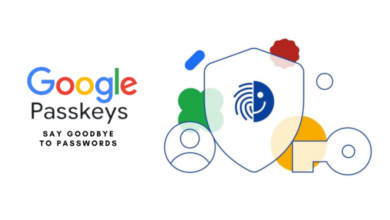
How Fraudsters Access Bank Accounts and Withdraw Money From Them
Banking has become more convenient than ever. With a few clicks or taps, you can transfer funds, pay bills, and manage your finances. However, this convenience also presents opportunities for fraudsters to exploit vulnerabilities and illegally access bank accounts. Understanding how these criminals operate can help you safeguard your financial assets.
Here’s a comprehensive look at how fraudsters access bank accounts and withdraw money from them.
1. Phishing Attacks
Phishing is one of the most common methods used by fraudsters to gain access to bank accounts. It involves tricking individuals into revealing sensitive information such as bank account numbers, usernames, passwords, and PINs.
- How it works: Fraudsters send emails, text messages, or make phone calls posing as legitimate entities like banks, government agencies, or well-known companies. These messages often contain links to fake websites that resemble the official ones. When the victim enters their login credentials or other sensitive information, it is captured by the fraudster.
- How to protect yourself: Always verify the source of any communication that requests personal information. Look out for spelling errors, generic greetings, and mismatched URLs. Never click on links or download attachments from unsolicited emails.
2. Malware and Keyloggers
Malware, short for malicious software, is another tool used by fraudsters. It can be installed on your device without your knowledge, often through infected email attachments, downloads, or websites.
- How it works: Once installed, malware can monitor your online activity, capture keystrokes (via keyloggers), and steal sensitive data such as passwords and account numbers. Some sophisticated malware can even bypass security measures like two-factor authentication (2FA).
- How to protect yourself: Keep your software and antivirus programs updated. Avoid downloading files or clicking on links from unknown or untrusted sources. Regularly scan your devices for malware and use strong, unique passwords for each account.
3. Social Engineering
Social engineering involves manipulating individuals into divulging confidential information or performing actions that may compromise their security.
- How it works: Fraudsters may impersonate bank employees, tech support, or even friends and family members in distress. They use persuasive tactics, often creating a sense of urgency, to trick victims into revealing their login details or authorizing transactions.
- How to protect yourself: Be cautious of unsolicited requests for sensitive information, even if the request seems to come from a trusted source. Always verify the identity of the person contacting you, and never share your banking information over the phone or email unless you are certain of the recipient’s legitimacy.
Also Check
4. SIM Swapping
SIM swapping is a technique where fraudsters trick or bribe mobile carrier employees into transferring a victim’s phone number to a SIM card in their possession.
- How it works: Once the fraudster has control of the phone number, they can intercept SMS-based 2FA codes sent by the bank. This allows them to reset online banking passwords and gain access to the victim’s account.
- How to protect yourself: Contact your mobile carrier and ask for additional security measures, such as a PIN or password for SIM swaps. Consider using app-based authentication methods instead of SMS-based 2FA where possible.
5. Data Breaches
Data breaches at companies and financial institutions can expose sensitive customer information, which can then be used by fraudsters to access bank accounts.
- How it works: When a company’s database is compromised, the stolen data, which may include names, account numbers, passwords, and other personal information, is often sold on the dark web. Fraudsters can use this information to impersonate victims and gain access to their bank accounts.
- How to protect yourself: Regularly monitor your accounts for suspicious activity. Use strong, unique passwords for each of your online accounts and change them periodically. Enable alerts for all transactions so you can quickly detect unauthorized activity.
6. Card Skimming
Card skimming involves the use of devices that fraudsters attach to ATMs, gas station pumps, or point-of-sale terminals to capture the information from the magnetic stripe of your debit or credit card.
- How it works: When you swipe your card at a compromised machine, the skimmer captures your card details, which can then be used to create a cloned card. Fraudsters may also install cameras to capture your PIN as you enter it.
- How to protect yourself: Use ATMs in well-lit, secure areas, and check for any signs of tampering before inserting your card. Consider using contactless payment methods where possible. Cover the keypad when entering your PIN.
7. Account Takeover via Public Wi-Fi
Public Wi-Fi networks, often unencrypted and unsecured, can be a playground for fraudsters.
- How it works: Fraudsters can set up rogue Wi-Fi networks or intercept data on legitimate public Wi-Fi networks. When you log into your bank account on an unsecured network, they can capture your login credentials.
- How to protect yourself: Avoid accessing your bank accounts or conducting sensitive transactions over public Wi-Fi. If necessary, use a Virtual Private Network (VPN) to encrypt your internet connection.
The methods fraudsters use to access bank accounts are diverse and constantly evolving. By staying informed about these tactics and adopting good security practices, you can significantly reduce your risk of falling victim to financial fraud. Always be vigilant, and when in doubt, err on the side of caution. Remember, your best defence is a proactive and informed approach to your financial security.









